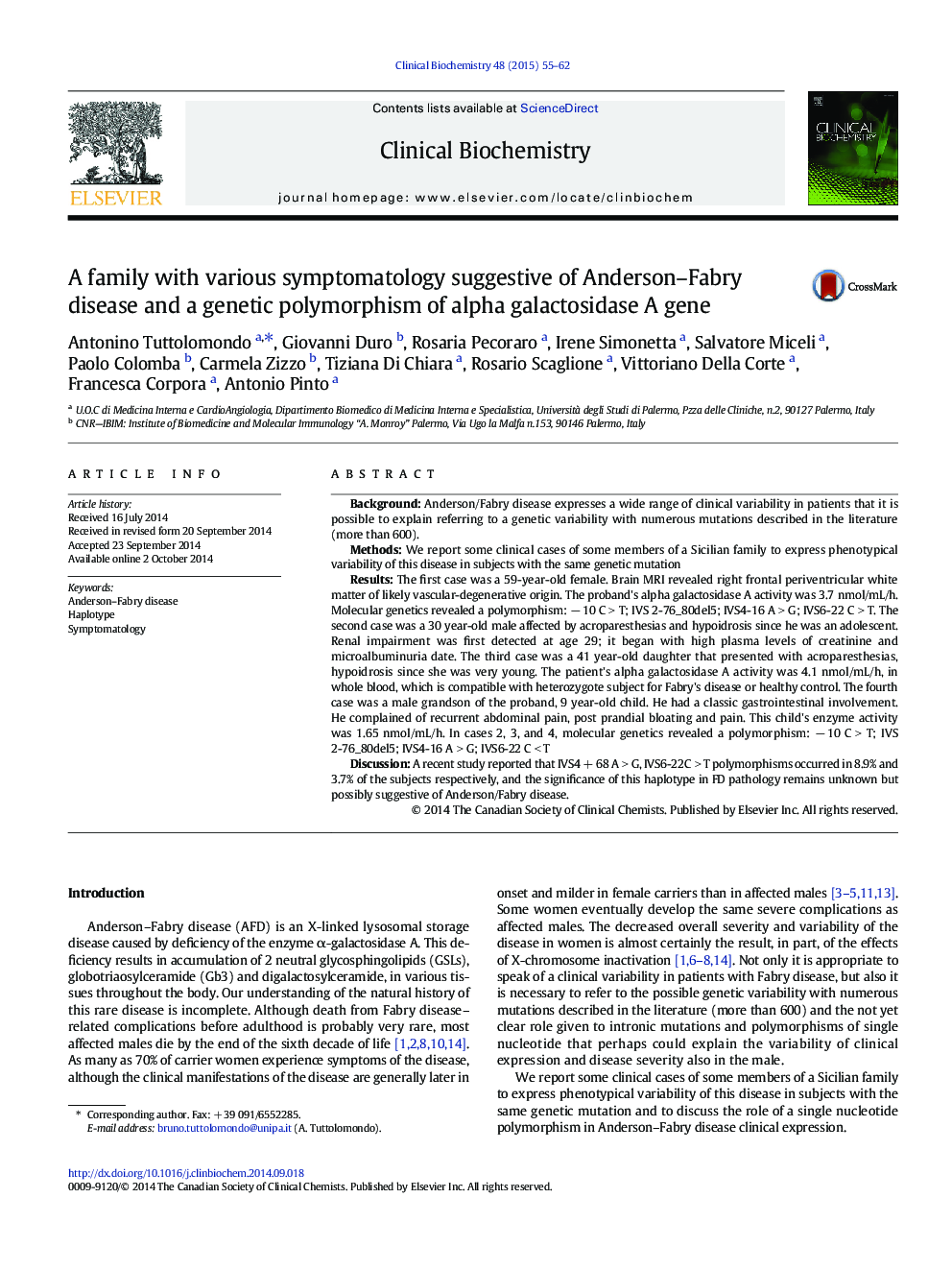| Article ID | Journal | Published Year | Pages | File Type |
|---|---|---|---|---|
| 1969053 | Clinical Biochemistry | 2015 | 8 Pages |
•Anderson/Fabry disease expresses a wide range of clinical variability.•We report some clinical cases of a Sicilian family.•They express phenotypical variability of this disease.•The significance of IVS4 + 68 A > G, IVS6-22C > T in FD is possibly suggestive of AFD.
BackgroundAnderson/Fabry disease expresses a wide range of clinical variability in patients that it is possible to explain referring to a genetic variability with numerous mutations described in the literature (more than 600).MethodsWe report some clinical cases of some members of a Sicilian family to express phenotypical variability of this disease in subjects with the same genetic mutationResultsThe first case was a 59-year-old female. Brain MRI revealed right frontal periventricular white matter of likely vascular-degenerative origin. The proband's alpha galactosidase A activity was 3.7 nmol/mL/h. Molecular genetics revealed a polymorphism: − 10 C > T; IVS 2-76_80del5; IVS4-16 A > G; IVS6-22 C > T. The second case was a 30 year-old male affected by acroparesthesias and hypoidrosis since he was an adolescent. Renal impairment was first detected at age 29; it began with high plasma levels of creatinine and microalbuminuria date. The third case was a 41 year-old daughter that presented with acroparesthesias, hypoidrosis since she was very young. The patient's alpha galactosidase A activity was 4.1 nmol/mL/h, in whole blood, which is compatible with heterozygote subject for Fabry's disease or healthy control. The fourth case was a male grandson of the proband, 9 year-old child. He had a classic gastrointestinal involvement. He complained of recurrent abdominal pain, post prandial bloating and pain. This child's enzyme activity was 1.65 nmol/mL/h. In cases 2, 3, and 4, molecular genetics revealed a polymorphism: − 10 C > T; IVS 2-76_80del5; IVS4-16 A > G; IVS6-22 C < TDiscussionA recent study reported that IVS4 + 68 A > G, IVS6-22C > T polymorphisms occurred in 8.9% and 3.7% of the subjects respectively, and the significance of this haplotype in FD pathology remains unknown but possibly suggestive of Anderson/Fabry disease.
